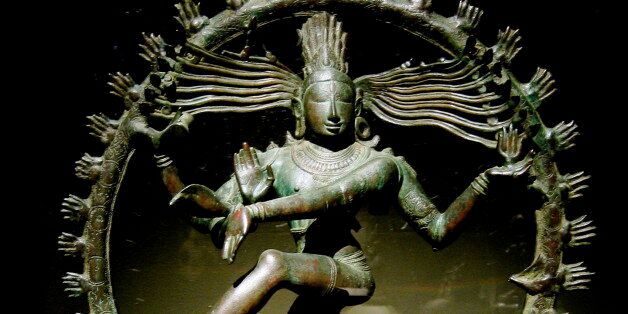
Dileep Padgaonkar, former editor of the Times of India, is a member of The WorldPost editorial board.
New Delhi -- Until a fortnight ago, the name Wendy Doniger didn't ring a bell beyond a small circle of experts on India. But now, this distinguished American scholar of Hinduism, who has taught in the finest universities in the United States and Britain, has attracted worldwide attention. The reasons, however, are far from congenial.
In 2009, she published a massive tome entitled "The Hindus- An Alternative History" that received extensive praise but also some brickbats. Among the brickbats, the one that hurt its target hardest was hurled by an octogenarian gentleman, Dinanath Batra, who has made it his life's mission to cleanse intellectual discourse in India of all influences that, in his view, defile the pristine nature of Hinduism. No sooner had Doniger's book appeared than Batra filed a civil suit against the author. He accused her, among other things, of referring to the libertine conduct of Hindu gods and goddesses out of her "Christian missionary zeal."
That charge was patently absurd, not least because it was leveled at a secular Jew. On a more serious note, however, Doniger's tormentor could not match her scholarship. She buttressed every argument in the book with extensive, firsthand documentary evidence available in Sanskrit. Indian traditions, she pointed out in substance, are open-ended, forever evolving, receptive to ideas emanating from other sources and willing and able to entertain doubt and dissent and myriad interpretations.
The case was recently settled out of court but in a manner that outraged liberal opinion even more than Batra's campaign of denigration: the publisher, Penguin, agreed to withdraw the book and pulp all copies. To justify its move, it sought shelter behind two sections of the Indian Penal Code: one prescribes harsh punishment for those who promote enmity between religious or racial groups and the other for those who insult religious beliefs or feelings. Penguin could have gone to a higher court to defend the author, but it chose to capitulate. In the process, it raised grave doubts about its commitment to the freedom of thought, speech and expression.
But why blame Penguin alone? The case of Wendy Doniger is only the latest example of the growing attacks in India against secular, liberal and left-wing writers, filmmakers, painters and journalists -- regarded as wayward children of 'Marx and Macaulay' -- by self-appointed custodians of religion and culture. They belong largely, though by no means exclusively, to Hindu right-wing outfits who nurse an obsessive dislike for India's Christian and Muslim minorities and see red whenever women seek their place in the sun.
What gives this rising tide of intolerance an ominous ring is the failure of the executive, police and judicial establishments to bring the vandals to justice. The fear of earning their wrath indeed permeates all levels of governance. In the process, what is central to the very idea of India -- a celebration of its bewildering diversity -- runs the risk of rapid emasculation.
The Doniger controversy couldn't have gained the traction it has had it not surfaced at a time when it did. Boisterous at all times, democracy in India -- touted as the world's largest -- becomes even more frenzied during election season. It begins to mimic a dance performed by the Hindu god, Shiva. Known as the "tandava," the movements of the dance are, turn by turn, serene and violent, chaotic and fluid and zealous and whimsical. They are meant to depict different phases of the cosmic cycle: creation, preservation and destruction.
All these phases are in full view in India today as the country heads for parliamentary polls that will take place in several stages in April and May. The campaign, however, has been under way for quite a few weeks now, with the argumentative Indian, as Amartya Sen calls his compatriots, discussing threadbare every issue at stake in the election at a pitch that is often deafening. All of this is par for the course. And none of this is peculiar to India.
What is peculiar to India -- and indeed to other countries in South Asia -- is the resurgence of politics rooted in atavistic urges, prejudices and conceits related to ethnicity, religion and caste and regional chauvinism. Without exception, every Indian political party harps on "development" and on "sound, effective, transparent and accountable governance." But scratch the surface and you discover that just about each one is trapped in 'identity politics.'
That is a spurious synonym for the sway of so-called group rights over the rights of individual citizens. It is the latter that are deeply embedded in Indian civilization -- as Wendy Doniger has so brilliantly demonstrated -- and in the Indian Constitution. And it is they that hold the promise of the ultimate end of Shiva's dance: liberation from all that enslaves the mind.